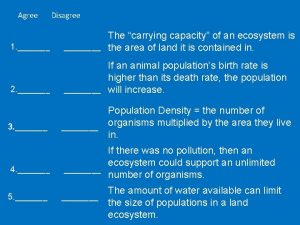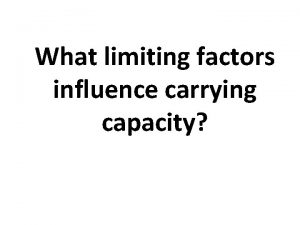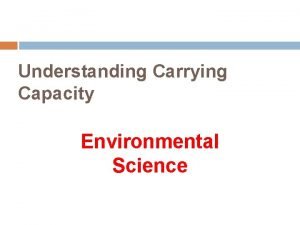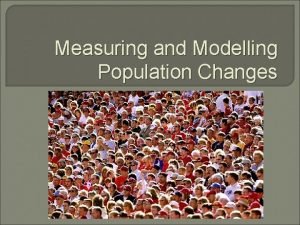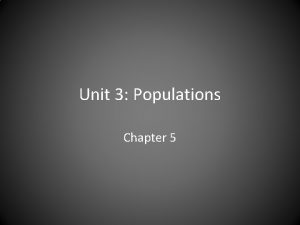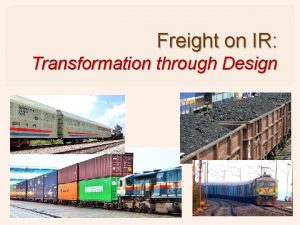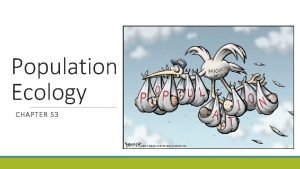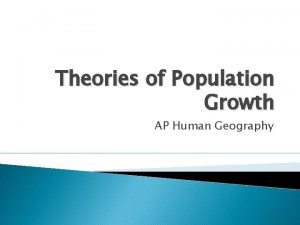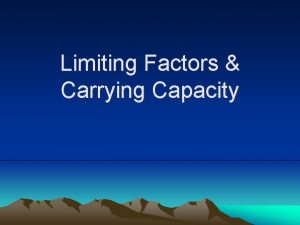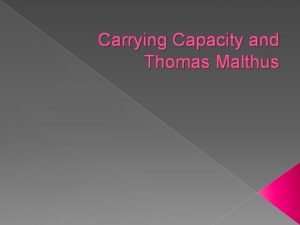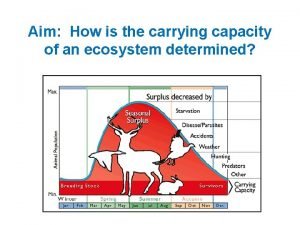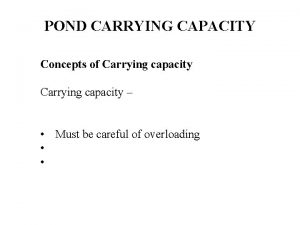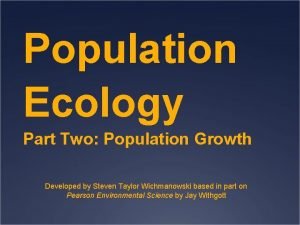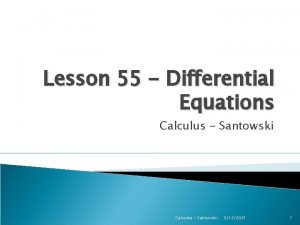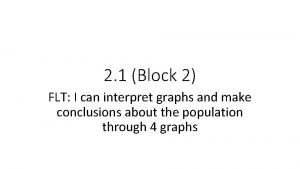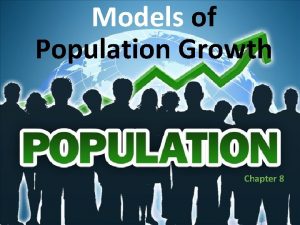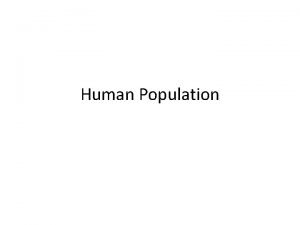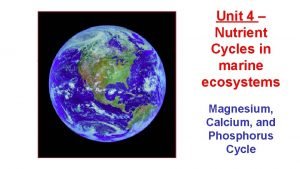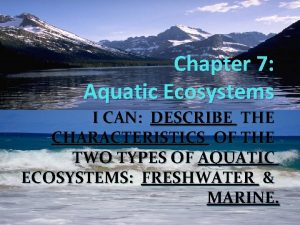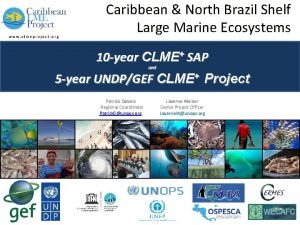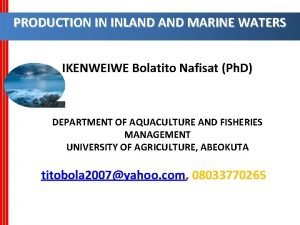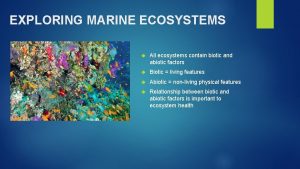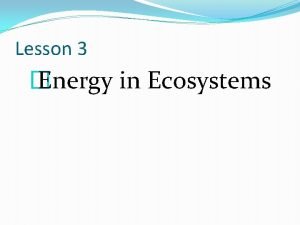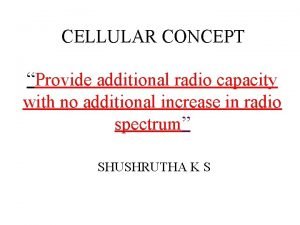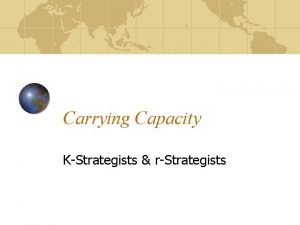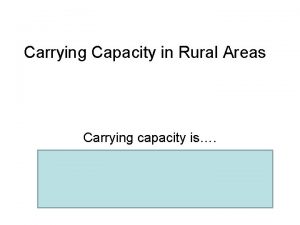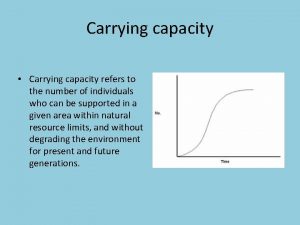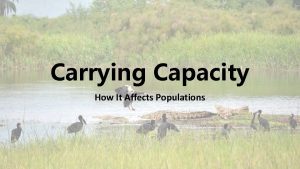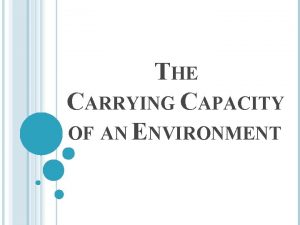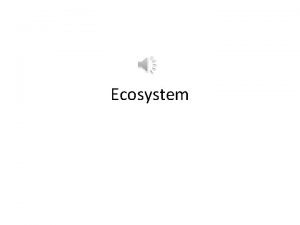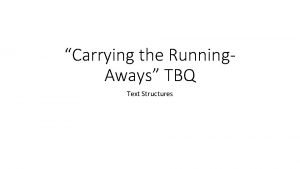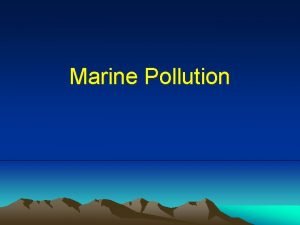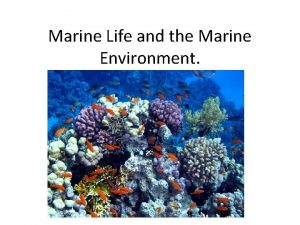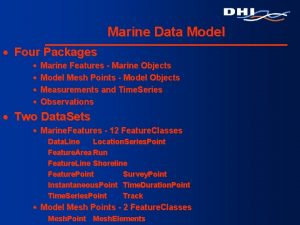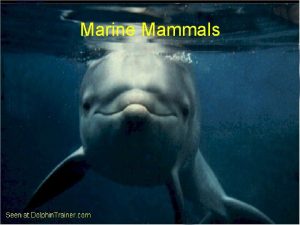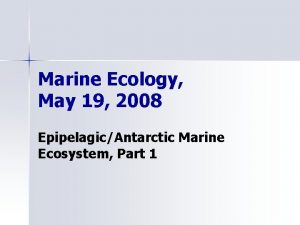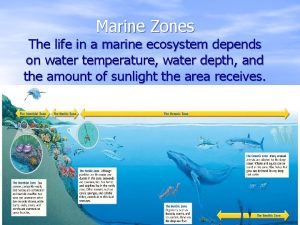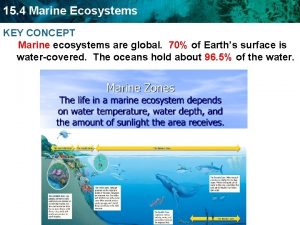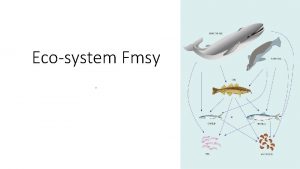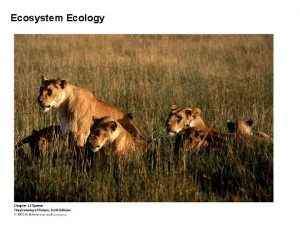Concept of Ecosystem Carrying Capacity for Marine Ecosystem


























- Slides: 26

Concept of Ecosystem Carrying Capacity for Marine Ecosystem Management Sinjae Yoo KORDI Ansan, South Korea

Outline v Why a new concept? • Ecosystem services • Interactions, linkages, and tradeoffs v Ecosystem Carrying Capacity • Definition • Properties v Future directions

YSLME Project v Project Title: “Reducing Environment Stress in the Yellow Sea Large Marine Ecosystem”. v Project Objective: Ecosystem-based Environmentally-Sustainable management and Use of the YSLME and its Watershed: Reducing Development Stress and Promoting sustainable Development of the Ecosystem from a Densely Populated, Heavily Urbanised, Industrialised Semi. Enclosed Shelf Sea

Five major environmental problems in the Yellow Sea ecosystem (from TDA report) v Marine environmental pollution v Marine and coastal habitat modification v Change in ecosystem structures and functions v Unsustainable fisheries v Unsustainable mariculture practices

v. Since we identified the major problems, all we have to do is to solve each problem?

Interactions between ecosystems and human societies Climate systems Indirect drivers Direct drivers Ecosystem Supporting Regulating Cultural Services Benefits people get from ecosystems Drivers Factors that change ecosystem structures, rates, and processes H u m a n s o c i e ti e s Provisioning

Provisioning services of YSE v Foods • wild fish, shellfish, algae, etc • Aquaculture v Genetic resources v New materials v Biofuels

Regulation services of YSE v Sewage treatment (water quality regulation) v Disease control v Climate regulation

Supporting services of YSE v Nutrient cycling v Primary and secondary production, and their transfer v Maintenance of biodiversity

Cultural services of YSE v Spiritual/religious values v Aesthetic values v Recreation and ecotourism v Cultural diversity

Multiple drivers Fishing Fisheries Resources Aquaculture pollution Habitat degradation Climate change Ecosystem changes

HUMAN ACTIVITIES Fisheries Land use (agriculture, sewage) CLIMATE CHANGE Construction/ Water use Jellyfish Aquaculture Precipitation Hypoxia Freshwater input Nutrients N: P: Si Food web/ Productivity Temp. Stratification Sea level rise. Eutrophication HAB

Fish catch Overfishing pollution Habitat modification Unhealthy Aquaculture Climate change aquaculture Provisioning services Genetic resources Primary and secondary production Supporting services biofuels Maintenance of biodiversity Nutrient cycling Water Quality regulation Climate Regulating control services Disease control

Necessity of a unified concept v Ecosystems provide many services. v We cannot manage each service separately. • There are linkages and tradeoffs among services. • Not all the drivers are controllable (e. g. , climate change). v There is a limit in ecosystem services and the services are inter-dependent.

v The limit of services will be determined by various ecological processes, which in turn are determined by ecosystem configuration and state. v There is a need for a comprehensive and holistic quantity that describe this capacity of ecosystem to provide its services. v Such capacity will change under different environmental conditions.

Logistic model Verhulst (1838, 1845) K=Carrying Capacity Logistic growth

Carrying Capacity in trout aquaculture Harvest stock (ind. m-2) (Le Cren, 1973) Numbers are in logarithm Initial stock (ind. m-2)

Previous usage of the term ‘Carrying Capacity’ v Human population dynamics (Verhulst, 1838 & 1845) v One of the basic concepts in ecology: r-K selection, v PICES Science Program (1996 -2006): “Climate Change and Carrying Capacity” v Ability of ecosystems to sustain fishery and other living resources, ” (Olsen, et al. , 2006).

Ecosystem Carrying Capacity v. Capacity of an ecosystem to provide various services v. The capacity is determined by ecosystem structure, productivity and habitat integrity. v. This capacity will change as societal requirements increase and climate change accelerates.

ECC through time Time

Determinants of ECC and drivers v Ecosystem structure • Trophic structure (e. g. , fishing, climate change, nutrient budgets) v Biological Productivity • Nutrient budget, climate change (stratification, alteration of freshwater cycle, solar radiation, etc) v Habitats integrity • Water quality (eutrophication, aquaculture) • Habitat destruction and modification • hypoxia

Further questions v How to quantify ECC? • Different approaches for services? üProvisioning services üRegulating üSupporting üCultural • Or unified valuation?

Properties of ECC v How long does an ecosystem can provide its services at certain level? (sustainability) v How much an ecosystem provide that service? (maximum Capacity) v How stable are the services? (resilience)

Future directions for YSLME v Theoretical formulation • Quantification of ECC • Properties of ECC and their behavior v Assessment of ECC of YSLME • Multi-scale approaches are desirable v Modeling of ECC of YSLME based on scenarios • How will it change given the changes in the ecosystem by climate changes • Regional scenarios

Summary v For a unified concept of ecosystem management, ECC is proposed. v ECC can conveys in the time of rapidly changing world. v Further formulation is needed to use the new concept. v Scenarios-modeling in regional scale will be useful for future management.

THANK YOU!
 Carrying capacity
Carrying capacity The information carrying capacity of a hologram is...
The information carrying capacity of a hologram is... Carrying capacity examples
Carrying capacity examples Carrying capacity environmental science
Carrying capacity environmental science Relationship between population and carrying capacity
Relationship between population and carrying capacity Carrying capacity
Carrying capacity Boxns wagon carrying capacity
Boxns wagon carrying capacity Carrying capacity example
Carrying capacity example Demographic transition model ap human geography
Demographic transition model ap human geography Whats carrying capacity
Whats carrying capacity Thomas malthus carrying capacity
Thomas malthus carrying capacity What is the carrying capacity (approx.)?
What is the carrying capacity (approx.)? Carrying capacity of pond
Carrying capacity of pond Population overshoot
Population overshoot Differential calculus
Differential calculus Exponential growth and carrying capacity
Exponential growth and carrying capacity S and j curves
S and j curves Carrying capacity
Carrying capacity Magnesium cycle in marine ecosystem
Magnesium cycle in marine ecosystem Marine ecosystem webquest
Marine ecosystem webquest Marine ecosystem dominated by marsh grasses
Marine ecosystem dominated by marsh grasses Caribbean large marine ecosystem
Caribbean large marine ecosystem Characteristics of marine ecosystem
Characteristics of marine ecosystem Biotic and abiotic components of marine ecosystem
Biotic and abiotic components of marine ecosystem Energy in ecosystems lesson 3 answer key
Energy in ecosystems lesson 3 answer key Channel capacity planning
Channel capacity planning Radio capacity may be increased in cellular concept by
Radio capacity may be increased in cellular concept by
